Lajedo de Pai Mateus: Brazil’s Spherical Boulder Hermit Homes
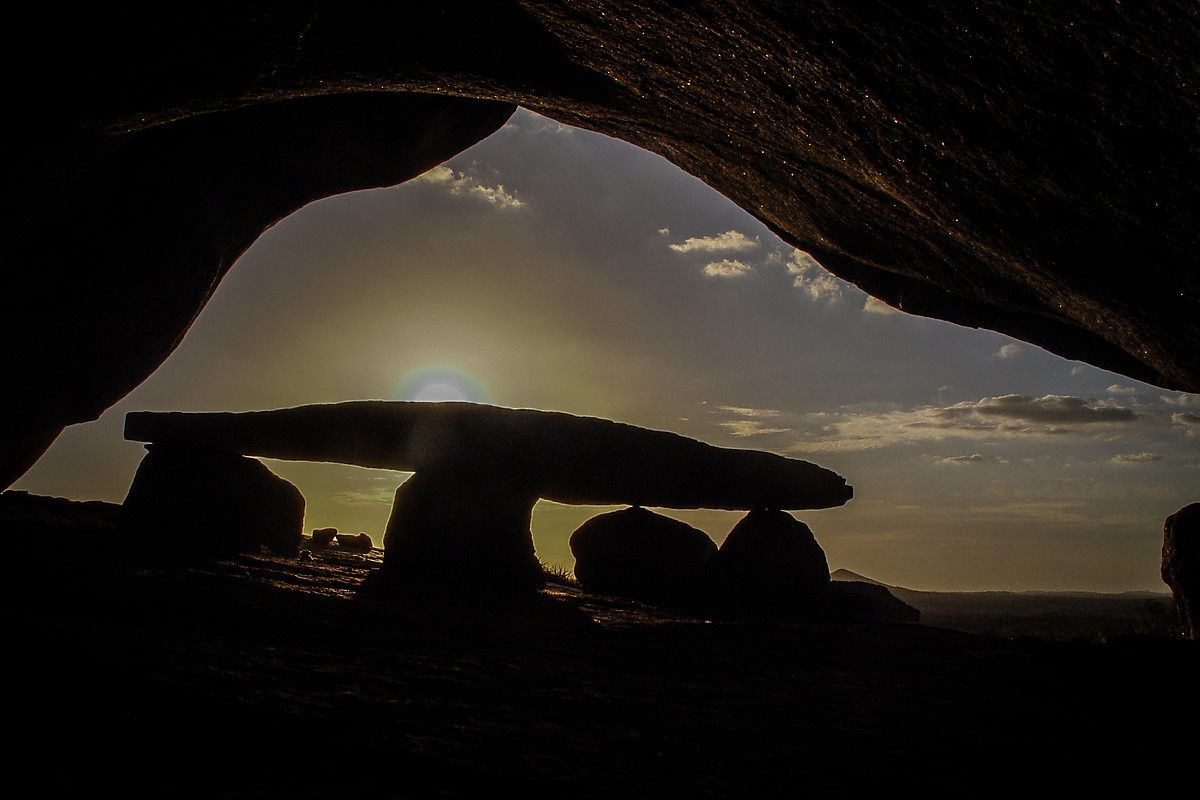 Sunset at Lajedo de Pai Mateus in Brazil (all photographs by the author)
Sunset at Lajedo de Pai Mateus in Brazil (all photographs by the author)
Each winter, tourists flock to northeast Brazil for its white sand and palm-lined beaches alongside turquoise waters. The Sertão, the region behind those beaches, is known for little else but poverty and harsh living conditions. Yet the interior is not only a repository of Brazil’s most ancient history found in Serra Capivara National Park, but is also home to a natural phenomenon called Lajedo de Pai Mateus in the state of Paraíba.
Lajedo is the Portuguese word for a “collection of stones.” In northeast Brazil, lajedo is specifically used to indicate an otherworldly collection of eroded, granite boulders on the top of a hill. To get to these boulders, you need to drive some 200 kilometers inland of João Pessoa, a city along the Atlantic coast. The boulders are on the ranch of Hotel Fazenda Pai Mateus, from where a guide can take you for a short ride in four-wheel drive to the foot of a smoothly polished stone. After an easy climb to the dome of the rock, you have a 360-degree view of Caatinga vegetation, characterized by stunted trees, green in the rainy season. In the dry season, the forest sheds its leaves and the landscape turns white (Caatinga means “white forest” in the Tupi language).
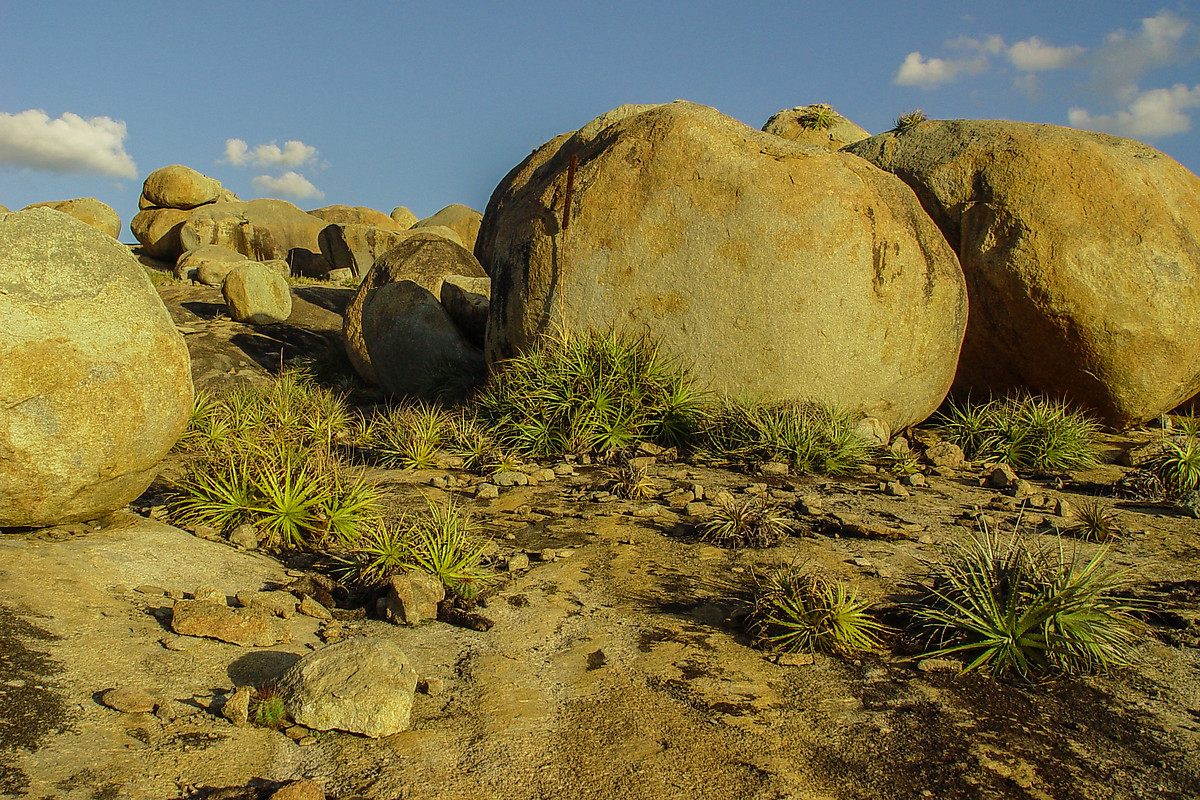
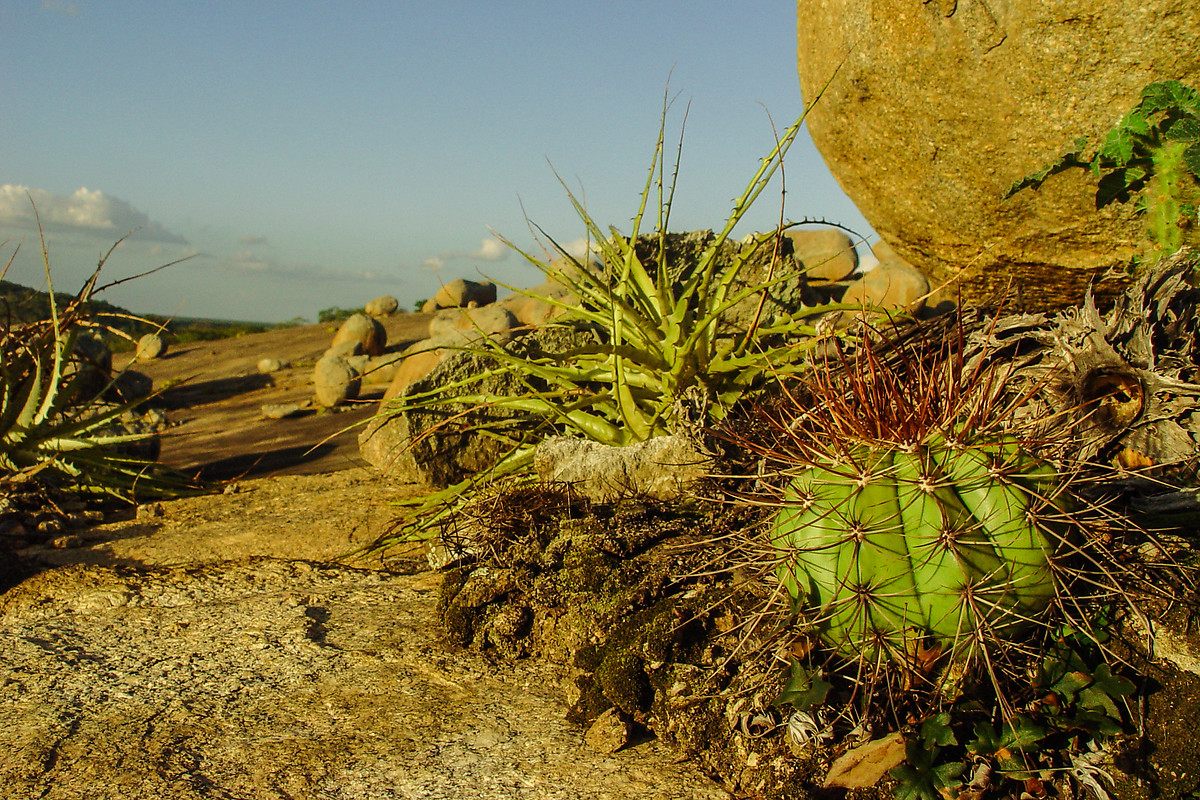
Here, on top of that rock, you view dozens of boulders that are a testimony to the forces of nature. It is an odd sight, with bare boulders balancing on top of an already bare rock. It makes you wonder if the gods were playing a French game of boules and left the metal balls behind. Erosion is a more scientifically plausible explanation, however.
Wind not only gave the boulders smooth, round, or oval shapes, but the heat reflecting from the bare rock combined with fierce winds caused the boulders to form hollows. The most aptly named boulder is Pedra de Capacete: the Helmet Stone. Similar sites have been found only in Namibia (Erongo Mountains) and Australia (Devil’s Marbles). Yet the boulders of Pai Mateus are not just a fascinating natural phenomenon; their existence is intertwined with inhabitation in the area.
This is the Cariri Region. It used to be home to Cariri indigenous people who lived in the area for some 10,000 years. Archaeological evidence shows they also lived in the hollowed boulder shelters. The Cariri were considered a tough tribe, and are still admired for the long time they succeeded in keeping out the Portuguese invaders. When they did have to surrender, they kept resisting to slavery, and refused to mix with the colonizers.
Unfortunately, they ultimately suffered the same fate as the majority of Brazil’s indigenous tribes and were wiped out. On some of the boulders you can still see vague, ancient rock paintings; it is all that remains of the original inhabitants.
 Pedra de Capacete
Pedra de Capacete
 Rock painting on a boulder
Rock painting on a boulder
Nothing is known about the region’s inhabitants until the 18th century, when an eccentric appeared on the scene, seemingly from nowhere. He called himself Pai Mateus, but nobody knows whether this was his real name. He was a curandero — healer — and lived as a hermit under one of the boulders. His bed and table made of stone are still there.
Local people came to him, asking to be cured. According to legend, he prayed to his gods in order to learn what was wrong with his visitors, and subsequently healed them with medicinal plants. After ten or fifteen years he moved on just as suddenly as he had arrived, and nobody ever knew where he went.
As I walked among the boulders, feeling the heat of the stones and taking in the views, the sun started to set. The sky suddenly burst with colors, as if somebody just set off some gigantic fireworks. I felt the energy so many others have felt there, and took in this wondrous landscape shaped by boulders, the history of Cariri indigenous people, and Pai Mateus. I felt the history, not just of the (relatively) recent inhabitants, but of eternity. This is a place to turn inward for a moment, to be wrapped up in the beauty and wonders of nature.
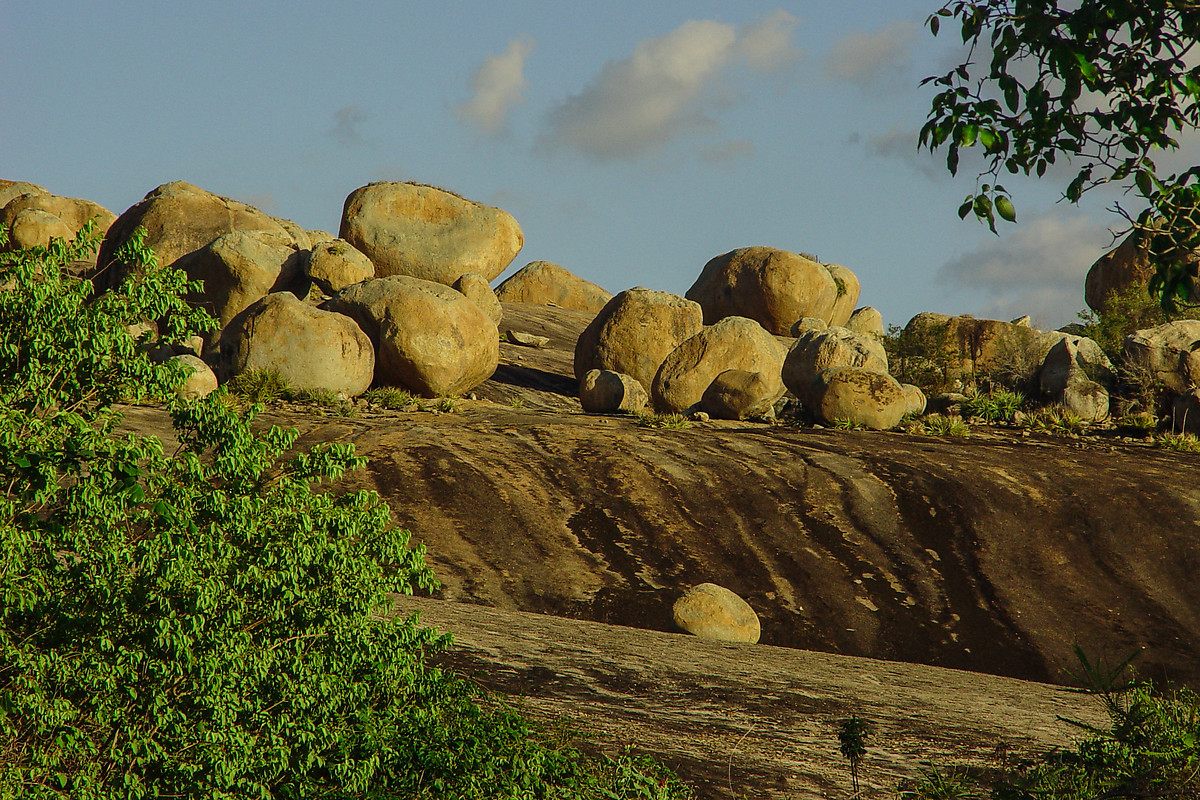

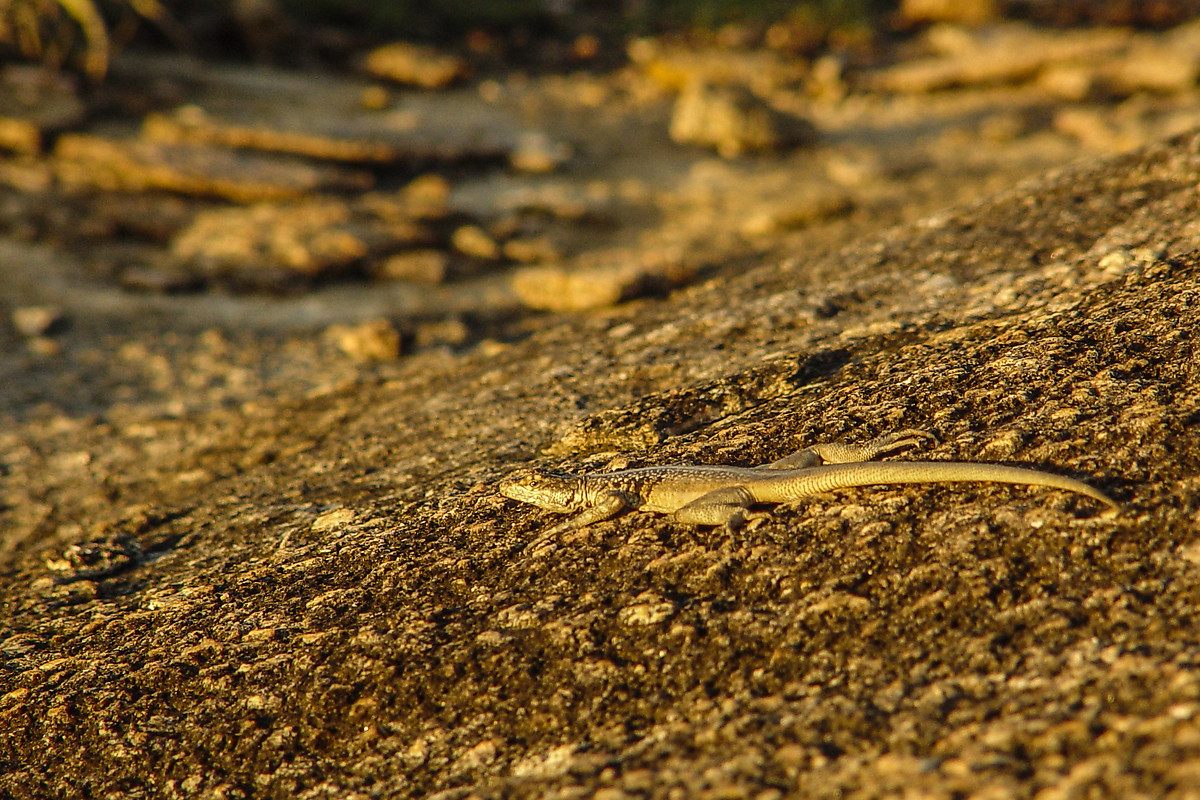


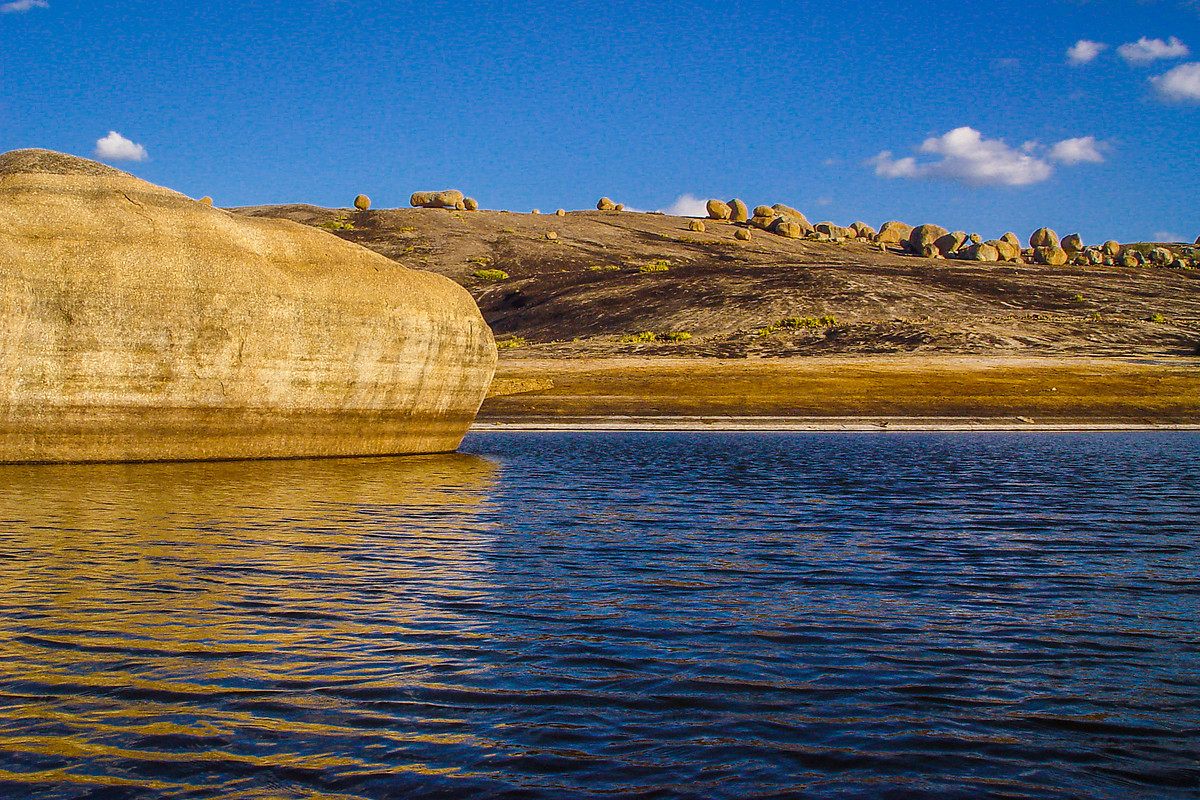
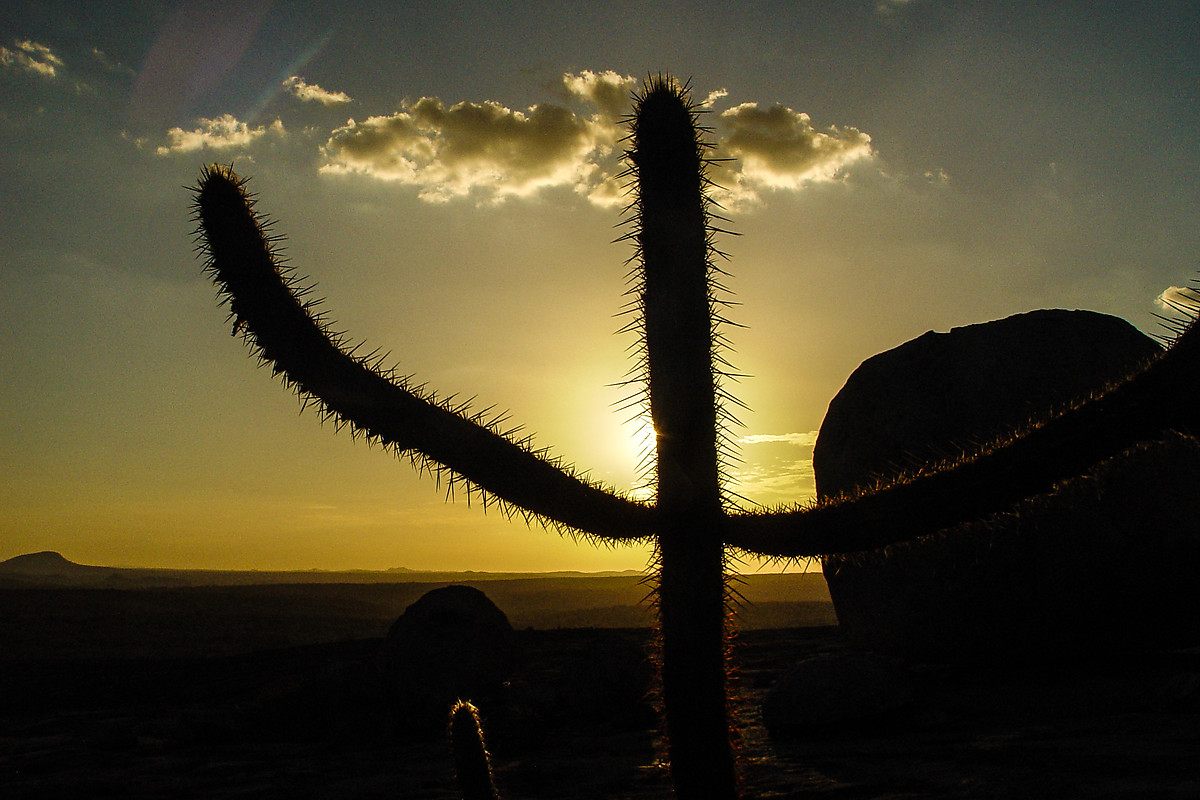
All photographs by the author.


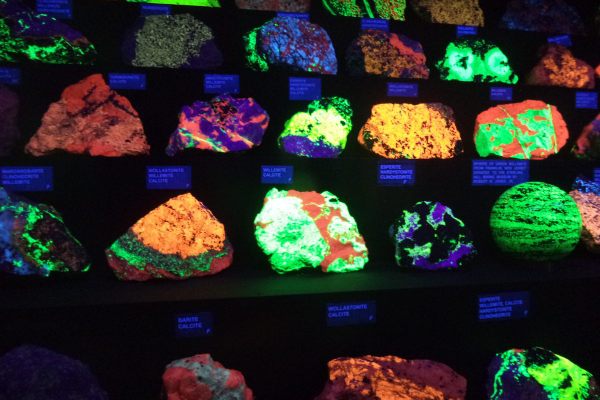

















Follow us on Twitter to get the latest on the world's hidden wonders.
Like us on Facebook to get the latest on the world's hidden wonders.
Follow us on Twitter Like us on Facebook